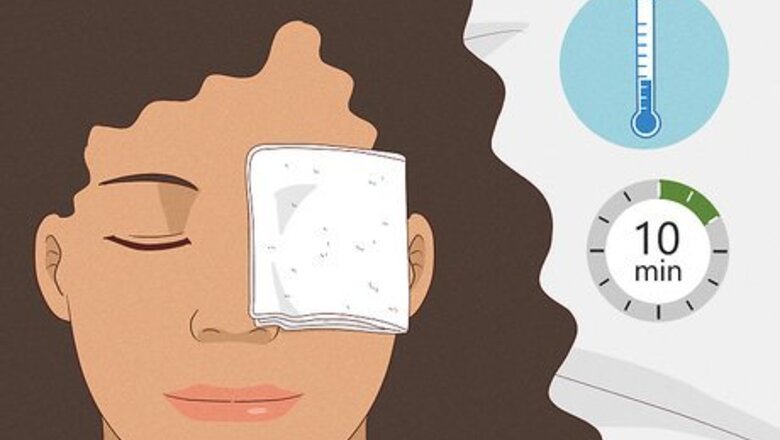
views
- Apply a cold compress on the swollen eyelid to reduce inflammation and pain. Hold the cold compress on the eye for 10 minutes twice a day.
- Treat a swollen eyelid with over-the-counter antihistamine eye drops like Visine-A 4 times daily to reduce discomfort.
- See a doctor if your eyelid swelling worsens after 2-3 days. Symptoms of an infected eye include fever, vision loss, and excessive pain.
Allergy-Related Swelling

Put a cold compress on the eye for 10 minutes twice daily. Wet a small cloth with cold water, and squeeze it out until it's damp. Place the compress over the affected eye for about 5-10 minutes twice daily. The cold sensation will soothe your eyelid and help to reduce swelling and inflammation. Try steeping a tea bag and letting it cool in the refrigerator before applying it like a cold compress to your eye. This will soothe the eye area and reduce swelling. For an alternative, wrap ice in a cloth or paper towel and put it on your swollen eyelid. Do not apply ice directly to the skin, as it can cause frostbite and damaged skin tissues. If you know an irritant like pet dander or pollen is causing your swollen eyelid, adding a dollop of petroleum jelly to the damp cloth before you apply it can help to provide extra-soothing relief.
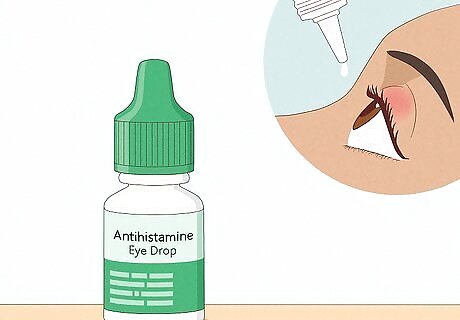
Use an antihistamine eye drop 4 times daily until the swelling is gone. Histamine is a chemical released by the cells in response to an allergy, which triggers inflammatory reactions. An over-the-counter antihistamine, such as Visine-A or Zaditor, will block histamines in your body and quickly ease your symptoms. Relief from antihistamine eye drops may only last a few hours. When taking these medications, be sure to follow the instructions carefully, as most eye drops must be taken several times daily. Consider preservative-free eye drops. Some people are sensitive or even allergic to preservatives found in eye drops.
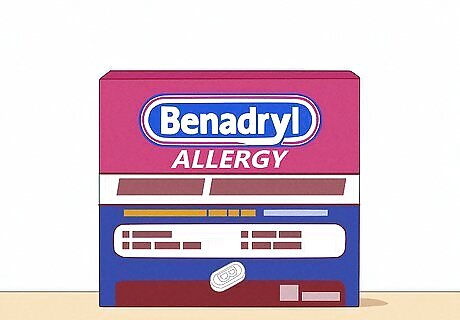
Take an oral allergy medication as directed until symptoms subside. Antihistamine pills can work to relieve symptoms of allergies which may be causing your swelling. Some popular allergy medications include Zyrtec, Benadryl, and Claritin. Use oral antihistamines with caution, as some of these medications can cause drowsiness. If you’re taking other drugs, be sure to ask your pharmacist if the oral antihistamine of your choosing doesn’t interact with them or cause serious side effects. If over-the-counter medication doesn't relieve your symptoms, your doctor may suggest prescription-strength allergy medications. Some of the strongest oral antihistamines include Clarinex and Xyzal.
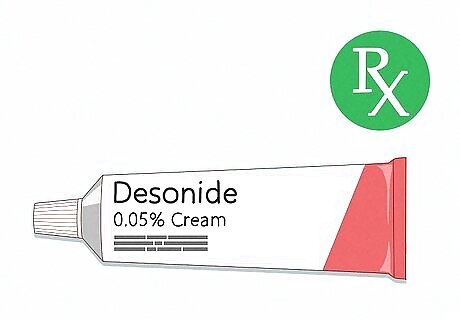
Apply a prescription steroid cream as instructed by your doctor. If antihistamines aren’t working, your doctor may be able to prescribe a prescription steroid ointment or cream to relieve eyelid swelling due to an allergy. For example, desonide 0.05% cream or alclometasone dipropionate 0.05% cream may be applied twice daily for 5-10 days, as instructed by your doctor.
Infection-Related Swelling
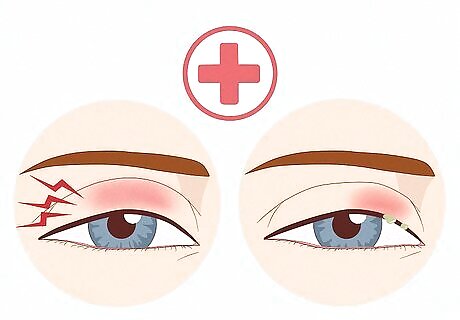
Visit your doctor if you suspect an infection. If you think your eyelid swelling may be the result of an infection, it's critical to see a doctor for accurate diagnosis and treatment. Signs of an eye infection include pain, discomfort, tenderness, itchiness, light sensitivity, yellow or green discharge, and crust forming around the lashes and lid. Depending on the cause of swelling, your doctor may prescribe steroid eye drops, ointments, or anti-inflammatory drugs to help resolve the condition quickly. Some common types of eye infections include blepharitis (eyelid inflammation), conjunctivitis (pink eye), and keratitis (infection of the cornea). If your doctor suspects you have one of these serious eye infections, they may refer you to an optometrist. Always follow your doctor’s instructions when taking any prescription medications.

Wash the eyelid with warm water and baby shampoo. It’s essential to clean an infected, swollen eyelid to reduce bacteria. Pour warm water into a small bowl and add 2-3 drops of baby shampoo. Then, dip a clean washcloth in the mixture and gently scrub the affected area. When you're done, rinse the swollen eyelid with warm water. Always be very gentle when cleaning the eyelid. Rubbing too hard may irritate your eyelid further. For an alternative, use an over-the-counter eyelid cleanser with a cotton swab to gently massage your eyelashes and affected lid.

Apply a warm compress for 10 minutes 2-4 times daily. A warm compress can add moisture, drain clogged oils, relieve pain, and relax muscle spasms. Plus, it’ll help loosen any crust that may have accumulated around your eye area. Make a warm compress by doing the following: Fill a bowl with warm water, ensuring it is not too hot. You'll know it's too hot if it is uncomfortable or painful to the touch. Take a clean washcloth and submerge it entirely in the water. Then, wring it out until it's damp. Fold it, put it over your affected eye, and leave it on for several minutes. When the washcloth gets cold, repeat this process with a new, clean washcloth and a bowl of warm water.
Injury-Related Swelling
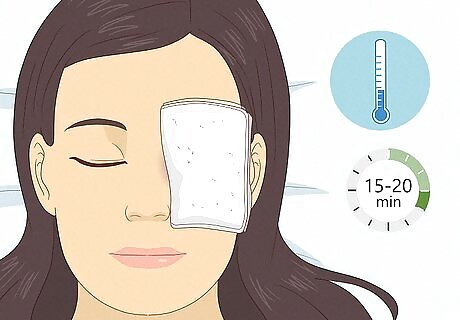
Apply a cold compress to the eyelid every hour for the first 48 hours. If your eyelid swelling is caused by trauma such as a black eye, put something cold on the area to quickly soothe the pain and reduce inflammation. A simple bag of frozen peas wrapped in a paper towel makes for a good compress because the bag will conform to your face. Apply the cold compress for 15 to 20 minutes at a time every hour. If you choose to use ice or frozen peas, make sure you wrap it in a cloth or paper towel. If you apply ice directly on the skin, it can cause frostbite or damaged skin tissues. Use a cold spoon to put on the eye for an alternative. Put a metal spoon in your refrigerator for about 10-15 minutes, then gently apply the back of the spoon to the bruised eyelid. Never put frozen raw meat on an injury, which may cause an infection.
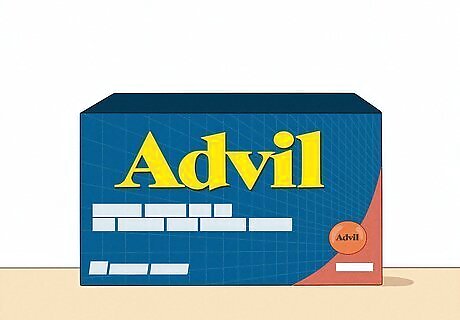
Take an over-the-counter painkiller if the pain is severe. If you have an eye injury, take an oral anti-inflammatory or painkiller to relieve pain and reduce inflammation quickly. Some popular medications include ibuprofen (Advil), Tylenol, and Motrin. Avoid Advil if you have a black eye, as it’s a blood thinner and may worsen bruising.

Use a warm compress on the affected eye after 2 days. After about 48 hours of using the cold compress, it’s time to switch to moist heat. Warmth on the eyelid will increase blood flow and facilitate healing. Use a warm washcloth as a warm compress or purchase one at the drugstore. Use the warm compress or washcloth for about 10 minutes, 4 times daily. Make sure the water you use for the warm compress isn’t too hot, as it could burn the skin around your eye. You'll know it's too hot if it is painful to the touch.
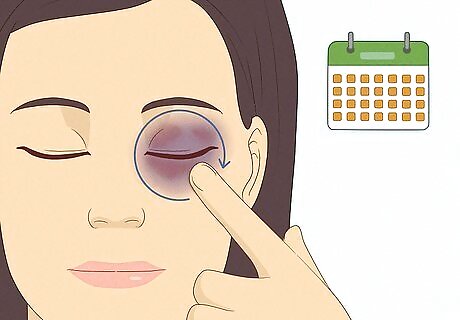
Massage the area surrounding the bruise with your fingers daily. Gently massage the area around the swelling and bruising by moving your thumb or index finger in a circular motion. This will help to reduce swelling and speed up the healing process. Always ensure your hands are clean before touching the affected area.
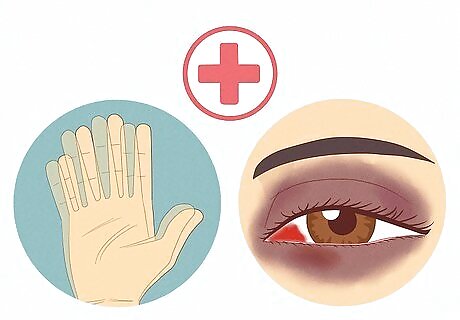
See a doctor for severe eye trauma. Even if you have a minor black eye, it is important to see a doctor to ensure there’s no internal eye damage. Contact your doctor if you have any of the following problems associated with your swelling: fever, blurred or double vision, trouble breathing through your nose, bleeding from the eye, or severe eye pain.




















Comments
0 comment